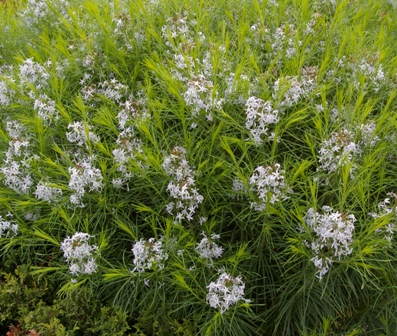This coming Sunday, April 10, we are going to have our second class of the year. It is “Assessing Your Garden – Sun, Soil, Water” and will be taught by our longtime employee Nadine Black. In it she will cover the three basic elements necessary for your plants to thrive. She will then teach the basic steps for how to evaluate each. Learn how your garden uses these elements and discover how to enhance their effect on your plants. I caught up with Nadine and asked her a few questions the class.

I didn't have a good picture of dirt.
What is your main focus for this class?
The main focus is how to analyze the three basics in your garden so that when you plant, your plants will thrive.
Where is the best place to start when you want to learn more about your soil?
Start by getting your hands dirty. By feeling your soil you can tell a lot about it. If it falls apart quickly you have sandy soil and if you can make a ball out of it you have clay. This is not an exact science but it can tell you a lot.
Does soil type affect how much you need to water?
Soil type definitely affects how much water you’ll use. Clay soil holds water much longer than sandy soil.
Does this class encourage sunbathing?
In a way, it does. Getting out into the garden and observing is the best way to determine where the sun hits when and for how long.
This is just a small part of what Nadine has plans to talk about. There will be soil samples to dissect, a core sample of our graveled lawn, a discussion of what plants work well with certain soils, and much more. We hope to see you this weekend.
Andy









Is it possible to get a copy of this article?
LikeLike
In what form are you looking for a copy? You are welcome to print out a copy for yourself if you want.
LikeLike
I was thinking of the class discussion, not the comments. I am wondering what ammendments to use for our mt clay soil & how much.
For instance, if spreading compost or aged manure, how many inches should be worked in for average garden soil for bulbs, plants, etc &/or vegie garden. I’m guessing a 3 to 4 inch layer might be good? More?
Thanks! Hope to visit your garden next year & would like to attend classes, but it would be difficult for me. I live in Clark County near Yacolt Mt. at about 800 feet. Some things do pretty well here, but my vegies did very poorly this year. I am primarily an organic gardener & am growing lots of iris, rhodes & azaleas, a few roses, & lilacs, Heather, hostas & several shrubs plus adding lilies, poppies, lupine, tulips, (have lots of daffodils) & next year, some dahlias. Never had any luck with clemates, but will try again Love the pictured one in this
blog.
LikeLike
I will see what information I can find from the class and get back to you as soon as I can. Thanks for your interest.
LikeLike
Here are our soil amendment formulas for your perrenial beds. The gravel helps to break up the clay and give you better drainage and root growth. It was a cold and wet spring so a lot of veggies did not thrive. Certain plants need the soil temp to be warm and that took a long time this spring.
Standard for new perennial or mixed planting beds (Medium or Heavy Clay)
Joy Creek standard for soil amendment is to till 2″ of 1/4-10 crushed gravel and 4″ of compost to the top ~6” of existing clay soils. Then an application of 3″ compost is applied as a cover mulch to suppress weeds and conserve soil moisture.
Standard for existing perennial or mixed planting beds (Medium or Heavy Clay) Joy Creek standard for soil amendment is in existing planting beds is to apply 1″ of 1/4-10 crushed gravel and then 3″ of compost as cover application to improve the soil, suppress weeds and conserve soil moisture. Gravel maybe applied directly around the crowns or trunks of existing plants while compost should be applied no closer than ~4” (approximately an 8” diameter). (To achieve the desired improvement in soil texture it may be necessary to repeat this process in consecutive years.)
I hope this helps you out. We have a handout with all this information available at the nursery and I will probably do an article on soil in the future.
Thanks.
LikeLike
Thank you so very much!! That info will help me a lot as I never even knew that some gravel was helpful.. It was very nice of you to answer my question. Hope to visit your garden some day!
LikeLike
Do you have a catalogue? Where can I find clemates for sale?
Is this a good time to plant them, etc?
LikeLike
Just want you to know, I answered my own questions to you in the previous message, so you don’t need to answer. I am very interested in you clemates & am going to try & find places for a couple or more so will get back to you if I decide to order any this year. Looks like you might be running out of some. Thanks
LikeLike